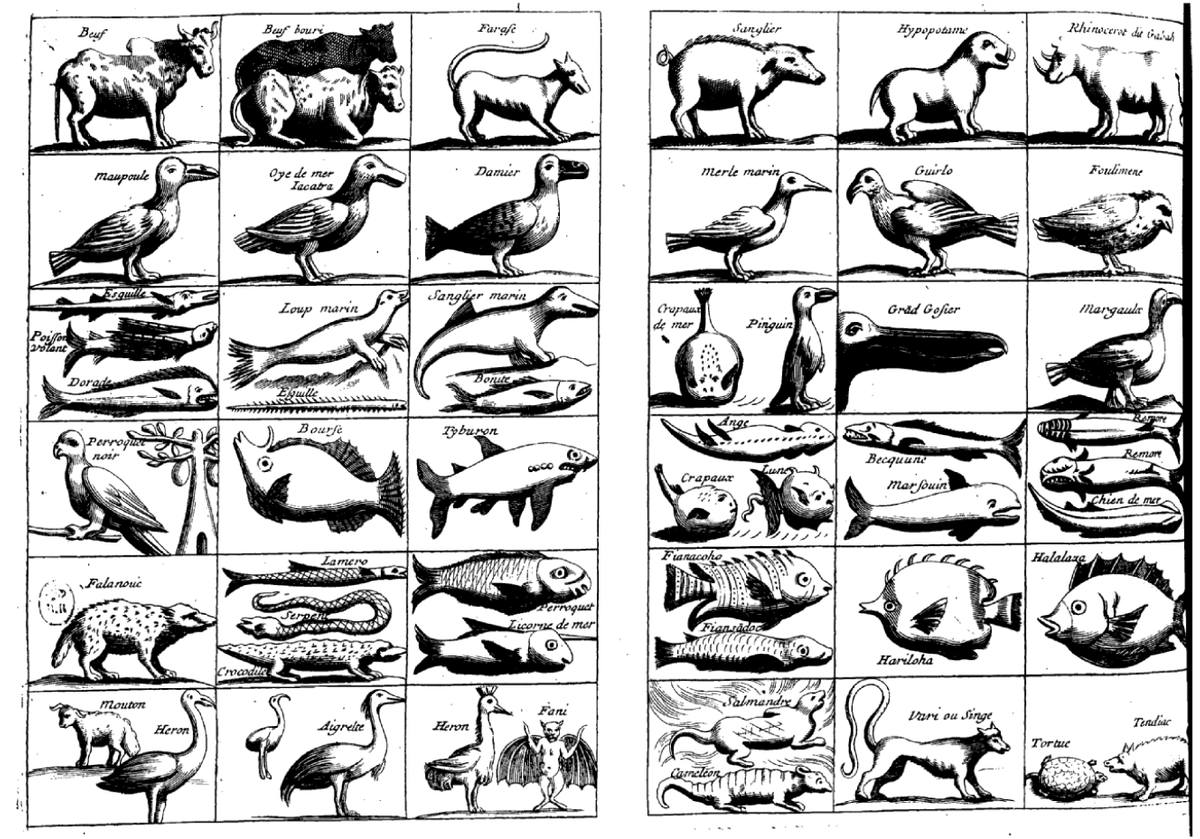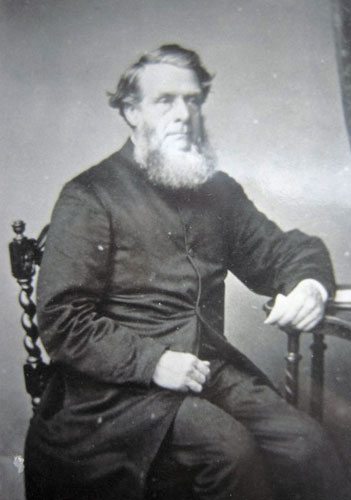Exploration and Discovery of Madagascar by Writers
Etienne de Flacourt (1607-1660)
Etienne de Flacourt led the French settlement of Fort-Dauphin from 1648 to 1655.

As Governor of Fort-Dauphin, he contributed to the colonization of the Isle of Bourbon (now Reunion) and to the knowledge of Madagascar and the Isle of Bourbon.
In 1653, he included in his “History of the Great Island” Madagascar: The report on the mutineers he had banished to Mascareigne.
In 1658, he added the report on the stay of some French people accompanied by Malagasy individuals.
He will also, according to their accounts, create a map of Bourbon.
If he failed in his trading mission, he left behind several works, including a dictionary of the Malagasy language and a history of the Great Island of Madagascar, which are very well documented and richly illustrated.
Here is one of the first pages of this true sum, which presents the southeast of the island, its fauna and flora, the history, and the customs of its population.
There is
A Lot of Animals
The “St. Lawrence Island” is called Sanrandib Madagascar by geographers, the inhabitants of the Madecasse country, Ptolemy Memuthias, Pliny Cerne, the author of the Nubian Geography, the Persians, and the Arabs. But its real name is Madecasse […].
This island is one of the largest in the world, filled with fertile mountains of forests, pastures, and plantations, and a landscape irrigated by rivers and ponds full of fish. It feeds an infinite number of oxen, very different from those in Europe, all with a certain fat lump in the shape of a magnifying glass on the.
Back pain.
Some authors have said that she feeds camels […].
 She feeds sheep with large tails […], these sheep have wool like goat hair. There are also many beautiful domesticated goats; many poultry and guinea fowl, called guinea hens in France, both domestic and wild.
She feeds sheep with large tails […], these sheep have wool like goat hair. There are also many beautiful domesticated goats; many poultry and guinea fowl, called guinea hens in France, both domestic and wild.
There are few animals that are harmful to humans and livestock. In the forests, there are wild boars that are different from those in Europe and less dangerous.
They are very hideous to look at, as they have two horns under each eye, covered with skin and not higher than an inch […].
There is a large number of animals, birds, and fish that I will describe below, each in its own place, as well as many plants and rarities.
Etienne de Flacourt, Histoire de la Grande Île Madagascar, 1648-1655,
Karthala, Paris, 1995
________________________________________
Alfred Grandidier
The Lorrain Alfred Grandidier (1836-1921) crossed the island between 1864 and 1875 and became a naturalist, geographer, ethnologist, historian, and chronicler himself.
The Hidden Legacy of Oral Stories – Take Action
The great explorer Alfred Grandidier will forever be linked to the Great Island.
However, it was a malaria crisis in India, his major exploration project, that forced him to change his plans.
He went to the island of Reunion for recovery, but was soon drawn to Madagascar, a vast territory that was still little explored by Europeans in the 1860s.
Upon his return to France, he dedicated the rest of his life to a monumental physical, natural, and political history of Madagascar – an encyclopedic work that was inspired by his passion for the island. Sohn Guillaume (1873-1957) continued.
In 1868, while collecting specimens of the Madagascan flora and fauna, Alfred Grandidier discovered two subfossil animals that were unknown to scientists.
The Rock Bird
Stopping in Ambohisatranà to cook my lunch, I was visited by the local chef, with whom I discussed the country’s products and, most importantly, its animals […] especially the song’aomby (lit. “resembling an ox”), and when I asked him about this animal […], he showed me a pond near my stop and told me that there
Some bones were found.

Enthusiastically, I went into the water, and with some of my men, we began to Searching through the mud that lined the bottom of the pond, I removed some other bones of the giant bird, the Aepyornis, which was still only known for its eight-liter eggs and some unidentifiable debris […]; among these bones were many others belonging to a yet unknown species of hippopotamus, which I named Hippopotamus lemerlei in honor of our Tulear factotum, and to other new and interesting animals.
Alfred Grandidier, Souvenirs of Travel 1865-1870,
Publication of the Malagasy Society for Archaeology, Antananarivo
________________________________________
James Sibree
James Sibree was born on April 14, 1836 in Hull.
In his early life, Sibree served as an engineering apprentice and worked for. The Health Authority of Hull (1859-1863).
In 1863, he sailed to Madagascar after being appointed as the architect of the Memorial Churches, Tananarive, for the London Missionary Society (LMS).
He worked on the churches in Ambatonakanga, Ambohipotsy, Andohalo, and Manjakaray. In 1867, he returned to England to study at Spring Hill College, Moseley, near Birmingham.
James Sibree was ordained as a priest in 1870. In February of the same year, he also married Deborah Richardson.
Together with his wife, he returned. As a missionary, he returned to Madagascar and was stationed in Ambohimanga.
He worked on a revision of the Malagasy Bible, participated in a deputation, and in 1876 went to work at the Theological Institution in Tananarive.
He spent four years in Antananarivo as the architect of the evangelical churches and made several more visits to the Great Island.
In “Madagascar and Its Inhabitants,” both a travel diary and compilation work, he shares his initial impressions of the country.
From the Coast to the Highlands
Wednesday, October 7 – We were up early and left our quarters on a beautiful morning at six o’clock. We had to travel from the coast to the highlands. Climbing hills, going down valleys, and crossing many rivers, with the only difference being that the hills became higher and steeper, the path more difficult […].
Along the way, we encountered a large number of Maromitas, who transported poultry, cassava, potatoes, rice, and other products from the interior to the coast. Most of these items are transported to Tamatave or another port, ensuring that trade ships are supplied abundantly and at very low costs.
Poultry is transported in woven cages with bamboo or other lightweight wood bars. We also passed several individuals loaded with European products for the capital. suchten nach neuen Handelsmöglichkeiten und brachten ihre Waren zu den Märkten in den Städten.
Einige von ihnen waren auch Handwerker, die ihre Fähigkeiten und Produkte anboten, um sie zu verkaufen oder zu tauschen.
Die Vielfalt der Waren und Produkte, die auf diesen Handelsreisen transportiert wurden, spiegelte die kulturelle Vielfalt und den Reichtum der Region wider. Twenty or thirty people. The hot hours of the day were spent in continuous ascents, and finally we found ourselves at a considerable height above the sea.
… When I traveled through this region, I could only be impressed by the wealth of the country and the immense resources it would offer to production if properly utilized by culture.
The hills would serve as grazing land for millions of cattle, in the valleys sugar, rice, and coffee would grow in sufficient quantity for consumption by the entire British Empire, and the coast would be excellent for growing cotton.
The country is also rich in minerals, copper, iron, and probably coal in the northern part.
James Sibree, Madagascar and its Inhabitants: Diary of a Four-Year Stay on the Island,
Trans. H. Monod, Société des livres religieux, Paris, 1873.








